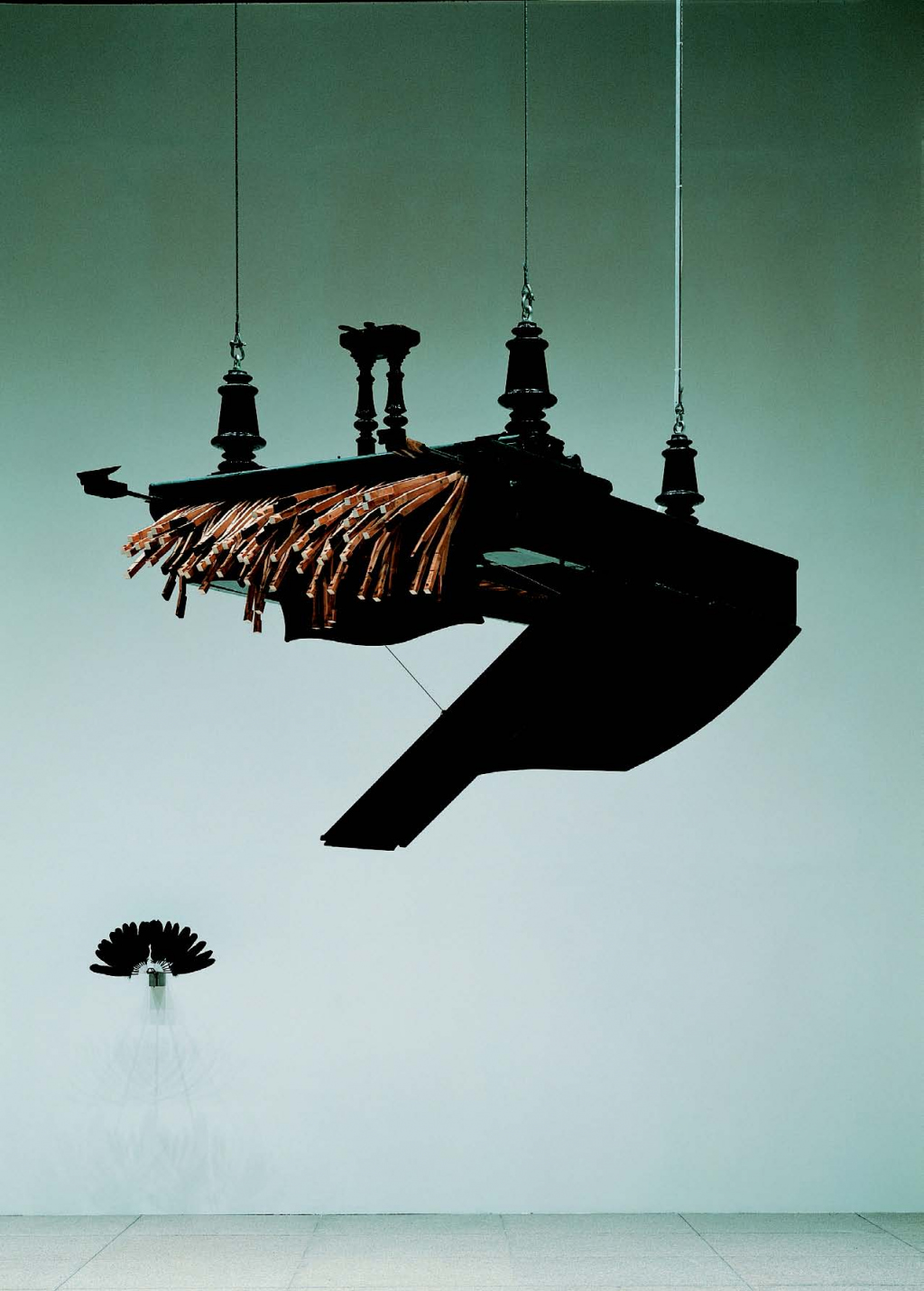by Owen Schaefer
It’s strange to be human in a Rebecca Horn exhibition. One could almost get the impression that the viewers are being mocked by the moving sculptures that typify her recent work. But the ‘dialogue’ referenced by the title of the show Rebellion in Silence: Dialogue Between Raven and Whale is one taken up without words; it is a grinding mechanical conversation, and a conversation of tension and movement, more human in what it cannot do than in what it does. And perhaps it is alienation from these works that inevitably makes us feel more human.
Horn’s work was not always this way. The show at the Museum of Contemporary Art Tokyo is a retrospective strongly geared toward the German artist’s most recent work, and there is a sharp divide between the body-extension performance art that she first became famous for in the 70s and the lovingly mechanical automata that she now tends to build. The show is therefore divided somewhat appropriately, with machines clicking away on the third floor of the museum, and several rooms of her film works showing on the first. And if it is Horn’s films and performances you are most interested in, then be sure to arrive early. There are eight films showing, and the shortest run for 20 minutes.
In her youth, Horn was hospitalized for a year after inhaling fiberglass dust, and spent much of her time there contemplating the body, its limitations, and the benign prison of her hospital bed. The films Performances 1 and Performances 2 showcase some of her most famous performances and body-extensions to come out of this period, such as Unicorn, a woman wearing a long horn-like apparatus strapped to her head while walking placidly through an open field.
But somewhere along the line, Horn moved away from these body-based works and toward her current movement-based approach. Two short films included with the machine section best illustrate the crossover—in one, a woman wearing a mask of pencils draws repetitive lines on a wall by moving her head back and forth. In the other, a mask of feathers keeps two people from kissing; over and over they come close, but are unable to connect.
This is often the kind of movement reproduced by her machines— movements that emphasize human motion by so awkwardly mimicking it. Two guns blindly search for a target before firing at one another; a painting machine mimics the act of art; and in more than one work, quaintly antique binoculars go through the motions of scanning the room.
But there are others that operate a little differently. Concert for Anarchy is perhaps one of Horn’s best-known works, and it’s easy to see why. At long intervals, a grand piano suspended upside down alternately spews out its guts with a scream of strings, or reels them back in again. There’s a strange double message here—one in which anarchy is played out by a piano refusing to be a piano, and simultaneously made ridiculous by its regimented set of actions.
One of the curious things about Horn’s machines is that they do not perform continually. There are moments where they do nothing, and there is no way of knowing when or how they will move. There is a lesson in waiting here, with the works demanding the viewer’s patience and attention. And in the Dialogue between Raven and Whale, it is the machines that speak in turn, and in the snapping, whirring, rattling rhythm of the room, you become all the more aware of your humanity.
Show: Rebecca Horn—Rebellion in Silence: Dialogue
Between Raven and Whale (to Feb 14)
Gallery: Museum of Contemporary Art Tokyo (Kiba station)
Hours: 10am–6pm (closed Mon) Admission: ¥1,200
Tel: 03-5245-4111 www.mot-art-museum.jp









